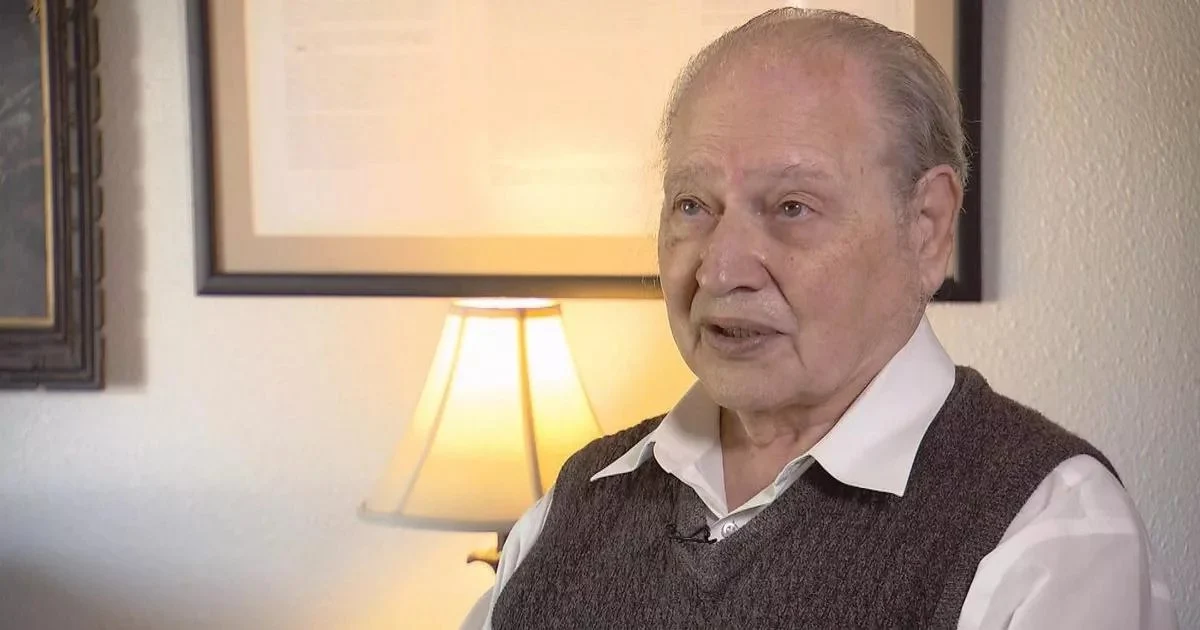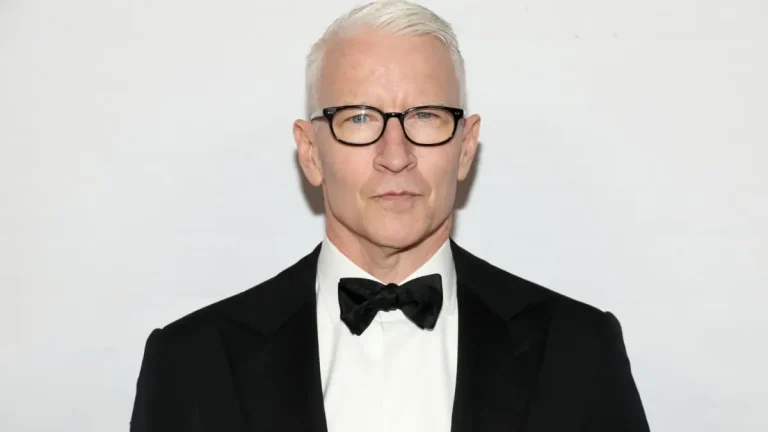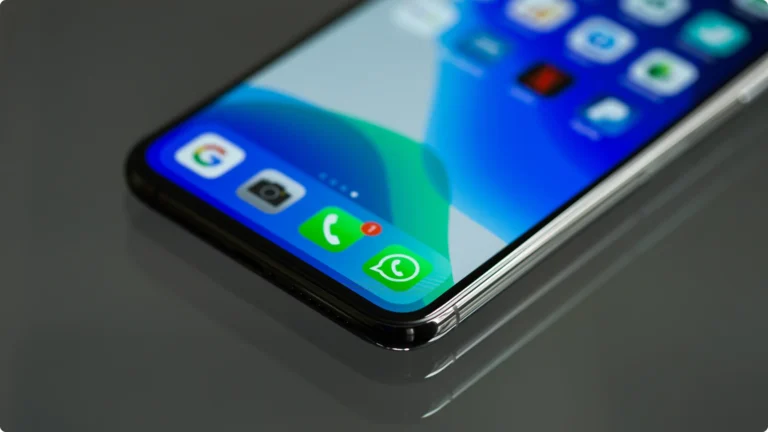Ever wonder what it feels like to walk away from a decision that could’ve made you a billionaire? Ronald Wayne doesn’t have to wonder—he lived it. He co-founded Apple, inked the deal, created the first logo, wrote the manual, then tapped out just 12 days later. That single move shifted his life forever. People love …
The Untold Story of Ronald Wayne Apple’s Forgotten Co-Founder

Ever wonder what it feels like to walk away from a decision that could’ve made you a billionaire? Ronald Wayne doesn’t have to wonder—he lived it. He co-founded Apple, inked the deal, created the first logo, wrote the manual, then tapped out just 12 days later. That single move shifted his life forever. People love the hero stories of Jobs and Wozniak. But Wayne? His story is just as important—maybe even more when you think about risk, regret, and what makes someone walk away from the biggest payday in tech history. You’re about to dive into the lesser-known side of the Apple saga. It’s not just about numbers—it’s about human instinct, fear of loss, and the kind of clarity most of us don’t get until years down the line. Let’s break down who Ronald Wayne really was, what he did, what he didn’t do, and most importantly—why it all still matters.
Ronald Wayne’s Biography: The Man Behind The Myth
Born in Cleveland, Ohio in 1934, Ronald Wayne wasn’t your typical tech visionary. He wasn’t trying to change the world with circuits and screens. Honestly, the guy loved machines—but from a practical, mechanical lens. Early on, he studied at the School of Industrial Arts in New York, where he mastered technical drafting. Not flashy, but essential. He wasn’t dreaming of building empires—he was focused on building systems that worked.
That kind of mindset explains where his head was at later in life. Trained to be precise, to see potential failure before you saw hype. It’s a different kind of intelligence. One that doesn’t pin its hopes on unicorn valuations or investor fame.
It wasn’t until he packed up and headed west to California in the 1950s that his path slowly intersected with the tech world. But even out there, Wayne wasn’t coding. He dove into the slot machine business—not glamorous, not successful either. That failed attempt became an important financial bruise. It would be a key factor later when Apple came knocking.
Professional Beginnings
California in the ’70s was hot with innovation, and eventually Wayne found himself at Atari. That’s where he met Steve Jobs. Jobs—full of ideas, charisma, maybe a little chaos. And Wayne? More of a stabilizer. Like the friend who doesn’t dive into the pool until they know how deep it is.
Atari was a whirlwind. But Wayne understood discipline, paperwork, and how to make business concepts tangible. So when Jobs and Wozniak were gearing up to build Apple, they brought Wayne in. Not to fund it. Not to design it. But to legitimize it.
Wayne wasn’t just the adult in the room—he was the legal foundation. He wrote up the original partnership agreement that gave the trio—Jobs, Wozniak, and Wayne—a third each. He also created the first Apple logo, a detailed etching showing Isaac Newton under a tree. Not sleek. Not minimal. But incredibly human. That was Wayne’s touch.
Founding Apple Inc.
| Founders | Role at Inception | Key Contributions |
|---|---|---|
| Steve Jobs | Visionary, Marketing | Investor pitches, product roadmap |
| Steve Wozniak | Engineer, Innovator | Hardware design, Apple I and II development |
| Ronald Wayne | Administrative Anchor | Partnership agreement, logo design, Apple I manual |
Wayne’s design of Apple’s first logo wouldn’t last long—Jobs later opted for something more modern—but it’s a symbol of how Wayne was embedded in those early days. He also wrote the user manual for the Apple I. Not coding it, but shaping how people understood it. That’s digital infrastructure too, just through the lens of clarity, not code.
He was the counter-balance to Jobs’ wild energy and Woz’s wizard-like invention. And for those 12 days, he had a 10% stake in what would become one of the most valuable companies in the world.
Ronald Wayne And Entrepreneurship: A Cautionary Tale
When people ask, “Why would someone give up $200 billion?”—they haven’t lived through a failed business and had creditors chasing them down. Wayne had.
Back when he was trying to build that slot machine business, things went south. He ended up on the wrong end of financial risk. Lawsuits, debt—you don’t forget that.
So when Jobs and Wozniak began racking up credit to fund Apple’s early development, Wayne knew the risk wasn’t spread equally.
- He was older—more assets, more to lose.
- In a partnership, everyone’s liable. If Jobs ordered $30,000 in parts, Wayne could be held responsible.
- There was no corporation structure to protect personal finances.
So, he walked away. Sold his 10% for $800. Later, an additional document waived future claims in exchange for $1,500 more.
Does that sound crazy now? Sure. But it wasn’t then. Not with his history. Not with his risk profile.
The story gets framed like Wayne “missed out.” But really, he made a move that made sense at the time. He evaluated the downsides and decided it wasn’t worth the upside.
Lessons In Entrepreneurship
There’s a common belief that big risk always equals big reward. But that’s not always true. And Wayne’s story isn’t about regret—it’s about clarity.
Being 40 surrounded by two twenty-somethings betting it all? That’s not just gutsy—it’s reckless if you’re not wired the same. Wayne knew that. And his caution taught a different kind of startup lesson:
– Know what you’re willing to lose.
– Get agreements in writing. Always.
– Think about liability before momentum.
– Walk away when the downside outweighs the thrill.
His story also shows that unequally yoked founders often crumble. The risk tolerances were miles apart. Wayne wasn’t afraid of innovation—but he was afraid of unsecured debt and personal ruin.
Wayne didn’t regret it. In fact, he told reporters over the years it was the right call based on what he knew. That’s the key: good decisions come from context, not hindsight.
Future entrepreneurs should bookmark his story. Risk is real. And choosing not to ride the rocket ship doesn’t make you foolish—sometimes it makes you the only clear-headed one in the room.
The Financial Legacy Of Ronald Wayne
So yes, let’s talk numbers.
That 10% stake? At today’s Apple valuation, we’re talking north of $200 billion. Life-changing doesn’t quite cover it.
But Wayne’s current net worth? Somewhere near $400,000. Modest. Barely a rounding error in Cupertino.
The gap is jaw-dropping. But so is the lesson.
Wayne’s talked about this often. And he’s stood by his call. He knew Apple had potential, sure—but potential tied to a mountain of risk. He wasn’t built for that grind. And the point isn’t whether he got rich—the point is that he made the best choice for his life, not someone else’s.
He lives quietly now in Nevada. Sells stamps, rare coins. Might not look like a digital titan, but he gave us part of the foundation. Without Wayne, there may never have been formal documents, brand integrity, or even that first wave of organized product thinking in Apple’s DNA.
So before you chalk him up as “the guy who blew it,” maybe ask yourself—could you have walked away and still found peace?
Wayne did. That’s legacy on its own.
Check out more about his journey and financial perspective in depth at [ronaldgwayne.com](https://www.ronaldgwayne.com/pages/bio?utm_source=openai).
Ronald Wayne’s Net Worth Breakdown
Current Net Worth and Modest Lifestyle
What happens when you’re part of founding one of the most valuable companies in history… and walk away from it? For Ronald Wayne, it means living quietly in Nevada with a net worth nowhere near the billions his former co-founders enjoy.
These days, Wayne’s net worth hovers around $400,000—not even a fraction of what Apple shares would be worth today. But that number tells only part of the story. He lives in a modest mobile home park and spends his time doing what he enjoys, like selling historical stamps and rare coins—hobbies that double as side income.
He’s not chasing headlines or trying to rewrite history. Instead, his lifestyle is shaped by comfort, simplicity, and a deep-seated belief that he made the decision that was right for him at the time. He’s not bitter—just pragmatic.
Unlike the turbocharged wealth trajectories of Steve Jobs and Steve Wozniak, Wayne’s financial story is rooted in caution. He wasn’t after Silicon Valley stardom. He was after peace of mind.
The Power of Financial Choices
Here’s the thing: not every once-in-a-generation business story is about explosive success. Some are about the decisions that never made big headlines.
Ronald Wayne’s choice to sell his 10% Apple stake for $800 is now legendary for what could have been—over $200 billion today. But that choice also reveals something powerful about psychology and risk.
Wayne had already tasted failure in business. He was 41 when Apple was founded—decades older than Jobs and Wozniak. And under Apple’s original partnership model, if things went south financially, all partners were on the hook personally. For Wayne, that wasn’t a risk he was willing to carry again.
- Risk tolerance matters: Understanding your comfort level with risk can be the difference between peace of mind and sleepless nights.
- Legal frameworks count: The fine print in partnership and ownership agreements can change everything.
- Timing influences outcomes: Context—like age, life experience, and past outcomes—affects how people make choices.
So maybe the lesson isn’t about missed billions. It’s about the value of making decisions that fit your life, even when they seem small.
Startup Strategies and Ronald Wayne’s Impact on Modern Entrepreneurship
Lessons from Apple’s Early Days
Picture this: a 1976 garage startup where three guys hammer out the beginnings of what becomes a global tech titan. Steve Jobs, the visionary. Steve Wozniak, the engineering genius. And Ronald Wayne—the adult in the room.
Wayne wasn’t just there to fill a seat. He drafted Apple’s original partnership agreement, created the first company logo, and even wrote the manual for the Apple I. His fingerprints are still on the foundation, even if his name rarely makes the headlines.
But what puts his contribution and departure in perspective is how it contrasts with the high-risk, high-reward mindset of his partners. Jobs and Wozniak were betting everything—and in their twenties, they could afford to. Wayne was more measured. More cautious.
There’s no denying that Apple grew sky-high without him. But Wayne’s role shows that even short-lived contributions can shape long-term impact. And if nothing else, his story adds a sobering layer to the mythology of startup success.
How Startup Leaders Can Apply Wayne’s Story
For today’s entrepreneurs, stories like Wayne’s are more than trivia—they’re playbooks. His decision might look like a cautionary tale, but it’s also a guide.
If you’re gearing up to launch a startup, here’s how Wayne’s path can steer your journey:
- Don’t skip the paperwork: Legal clarity on ownership, liabilities, and roles protects all parties.
- Have the hard conversations early: Talk through scenarios—what if the company scales? What if it tanks?
- Assess personal risk: Startups can cost more than money—think stress, time, and even friendships.
- Diversify your outcomes: Not everyone needs to be the CEO. There’s value in consulting, investing, or advising based on your strengths.
Wayne’s caution wasn’t failure. It was a calculated move, based on his own resume of wins and losses. And for founders today, the takeaway couldn’t be clearer: Know what you’re signing up for.
Ronald Wayne’s Influence on the Tech World
Role in Shaping Apple’s Early Direction
Ronald Wayne may have exited Apple early, but his contributions had weight. It was Wayne who put Apple’s early structure into words—literally—by drafting the original partnership agreement. His touch showed up in the company’s first logo too, an image far removed from today’s sleek simplicity but packed with meaning at the time.
He also wrote the manual for the Apple I, the computer that launched a revolution. Think about that: the instruction manual for a machine that would eventually evolve into the MacBook and iPhone, penned by the guy who walked away.
Reflections on Tech Evolution
Wayne didn’t stay in tech, but he talks about it with a kind of historical wisdom. His perspective bridges the analog skills of the past—drafting, mechanical engineering—with the rise of digital empires.
In interviews, he’s said that Steve Jobs had immense vision, but also immense confidence. Wayne, on the other hand, saw the pitfalls. That divergence is part of what makes tech innovation fascinating—it runs on both boldness and boundaries.
Ronald Wayne might not have stayed in the spotlight, but his early involvement in one of the world’s most influential companies is a reminder: sometimes, it’s the quiet contributors who help build revolutions.
Ronald Wayne’s Programming and Innovation Insights
How often do we hear about someone helping build one of the biggest tech companies on Earth… and then walking away in less than two weeks?
Ronald Wayne’s story is exactly that. But here’s the punch most people miss: this guy wasn’t just a paper pusher or a silent partner. He was building tangible assets for Apple’s future—before it became a household name.
Contributions to Early Apple Products
Back in 1976, when the Apple Computer Company was just three dudes and a dream, Wayne stepped in with structure. He drafted the original partnership agreement—that’s legal framework, sure, but also a critical act of shaping the company’s DNA.
But he wasn’t just pushing paper.
- He designed Apple’s first-ever logo – not the slick silver apple you know now, but one with Isaac Newton sitting under a tree. It spoke to vision and gravity (literally).
- Wrote the manual for the Apple I. Think about that – he’s the guy making sure early adopters could actually use the machine effectively.
- Brought user-focused thinking into the room. Jobs had ideas. Woz had code. Wayne bridged that into something understandable for real people.
Everything he touched was about readability, usability, and clarity. In an era when tech manuals were often incomprehensible walls of text, Wayne made products feel approachable—for non-engineers.
Insights into Contemporary Programming and Development
Here’s the kicker: Wayne wasn’t a coder like Woz. But today’s devs still have something to learn from his approach—especially modern UX and product teams.
His instinct was simplicity. Zero fluff. Utility before flash. If you’re building software in 2024 and not obsessing over how your users interact with it, you’re missing the mark. Wayne had that dialed in before UX was even a buzzword.
The man used real-world experience to ground fantastical ideas in reality. That kind of critical thinking? Still priceless in tech today.
Ronald Wayne’s Business Acumen and Investment Profile
You hear about crazy startup exits, and Wayne’s always the go-to “what if” story. But let’s cut through the noise: Did Ronald Wayne make a bad call?
Short answer—depends on your goal.
Conservative Investment Approach
Wayne wasn’t just throwing darts at a board hoping for a unicorn. He’d been burned before in business—his slot machine company tanked. So walking into Apple, facing personal liability in a general partnership, the man made a calculated exit.
He sold his 10% for $800. That same chunk is worth over $200 billion today. But for him, it wasn’t just numbers. It was about peace of mind.
He didn’t want to risk ending up in debt again. So, he backed out. That’s not failure. That’s risk management anchored in experience.
Even later in life, his investments mirror this mindset: simple, tangible assets. Stamps. Rare coins. Concrete stuff he understands. No meme stocks. No crypto frenzy.
It’s slow. Steady. Predictable. And for Wayne? That’s enough.
The Balance Between Innovation and Prudence
Here’s where most people mess up—they confuse innovation with recklessness. Wayne proved you could be visionary without betting the farm.
He teaches a killer lesson: Not every opportunity, no matter how shiny, is right for you.
Don’t get caught idolizing the billionaire outcome without understanding your capacity for risk. Wayne didn’t chase the dream to the moon because he needed security first. That self-awareness? That’s legit business intelligence.
What can aspiring founders learn from this? Not every story needs a rocket ship ending. Sometimes, the smart play is knowing when to walk away with your wallet—and your sanity—intact.
Legacy of Ronald Wayne: Inspiration for Innovators
So what do we actually take from Ronald Wayne’s journey? Is he the guy who missed out? Or the guy who knew exactly who he was before the billions blinded him?
The truth? Probably both.
Bridging Generations of Entrepreneurs
Wayne’s story throws down a bridge between eras. He came from the world of technical drafting boards, not glowing screens. He built machines you could touch, not just code you might deploy.
But even with a manual set of tools, he left fingerprints on one of the most digital companies ever created.
Modern entrepreneurs, especially in tech, glamorize disruption. But Wayne? He represents the roots of creation done with practicality, handwriting, and instinct. He didn’t trend-chase or lean on data analytics. He trusted his gut—and made choices that let him sleep at night.
That mindset’s missing in a lot of startup culture today. Legacy isn’t just about money. It’s about what lane you carved and what you passed down. Ronald Wayne carved a cautious one—but it’s lit with lessons.
Final Takeaways for Aspiring Innovators
If you’re chasing the next big thing but living paycheck to paycheck, maybe don’t laugh at Wayne’s $800 win. He valued certainty and slept well knowing he made a choice that fit him.
The guy bounced when the risks felt too inflated. And he never played victim. That takes backbone.
Here’s what we can learn if we’re paying attention:
- Opportunities come fast, but responsibility hits harder.
- Your risk threshold matters more than the valuation on paper.
- Legacy isn’t just having your name on a product—it’s living in alignment with your values.
- You don’t need to be on magazine covers to be someone who added serious value in the room.
Ronald Wayne net worth might be modest today—about $400,000—but you can’t measure life’s returns with just cash.
He’s lived with clarity, not regrets. It was never about being the richest. It was about making the right call based on who he was and where he stood.
Entrepreneurship’s not just about betting big, it’s about knowing yourself so well that you don’t get swept up in someone else’s storm. And from that lens, Wayne didn’t miss out. He just played a different game entirely.






